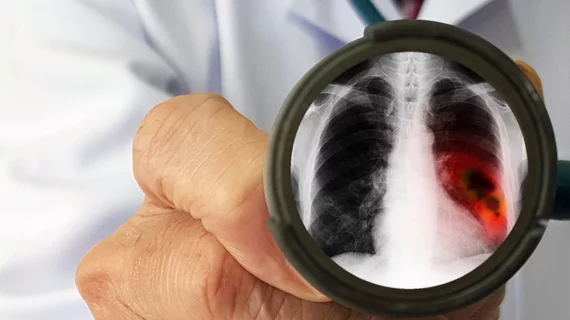Analysis finds significant variation in radiologists’ follow-up recommendations for lung nodules
There is widespread variation in whether radiologists make a follow-up recommendation for pulmonary nodules, and organizations may need to consider changes to help alter this behavior.
That’s according to a new single-center analysis out of Brigham and Women’s Hospital, published Sunday in JACR. Lung cancer is the deadliest form of the disease in the U.S., and pulmonary nodules are one of the most common reasons for repeat CT exams. Practice guidelines help dictate how radiologists should respond in such scenarios, noted experts with the Boston-based institution. Yet, Brigham found significant differences in the probability of making a follow-up recommendation among physicians in the same subspecialty division.
“Unwarranted variation for pulmonary nodules could have significant downstream implications on not only frequency of repeat imaging, but overall medical costs and quality of patient care,” Neena Kapoor, MD, the quality and patient safety officer in Brigham and Women’s Department of Radiology, and colleagues wrote Feb. 7. “How to alter radiologist behavior and reduce variation in reporting of follow-up recommendations is a challenging problem that likely requires multiple interventions and stakeholder engagement.”
To better understand this issue, Kapoor and co-authors analyzed 142,000 chest and abdominal reports, gathered between 2016-2018 in its abdominal, thoracic and emergency radiology subspecialty divisions. The team harnessed a natural language processing tool to pinpoint 24,512 reports with pulmonary nodules during that period that did not end up being positive for lung cancer.
All told, the team found that 4,939 (20%) of reports had a follow-up recommendation for pulmonary nodules. The majority were CT scans of the chest (76%), outpatient studies (63%), and interpreted by thoracic rads (64%). Study authors calculated a 4.3-fold difference between radiologists in the probability of making a follow-up recommendation for a pulmonary nodule.
Digging deeper, Kapoor et al. also learned that studies for male patients and abdominal CTs were less likely to have a pulmonary nodule follow-up recommendation. On the other side, older patients, the presence of a trainee, inpatient and ED examinations were all associated with higher rates. The authors, however, did not delve into the reasons for these discrepancies.
“Our work serves as a first step for future work to quantify the magnitude of variability in follow-up recommendations for pulmonary nodules,” the team concluded. “Further studies will need to determine the downstream implications of variation in follow-up recommendations, including the clinical appropriateness of radiologist recommendations, variability in length of follow-up or imaging modalities used, and downstream imaging costs and quality of care.”
You can read more of the analysis in the Journal of the American College of Radiology here.

